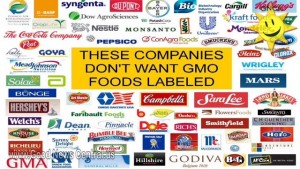Food politics: the Lancet policy infographic
As part of its series on obesity, the Lancet has produced this chart to illustrate why it is so important to create a food environment that makes healthy choices easy. Nice!


As part of its series on obesity, the Lancet has produced this chart to illustrate why it is so important to create a food environment that makes healthy choices easy. Nice!

PoliticoPro Morning Agriculture reports on USDA Secretary Tom Vilsack’s speech to the Consumer Federation of America’s National Food Policy Conference in Washington, DC.
About changing the rules so that SNAP benefits could not be used to buy unhealthy foods, Vilsack said:
[recipients] may buy a little bit more soda, but they might buy less salty snacks than we do. They might purchase a little more of this than we do, than non-SNAP families, but we purchase a lot more sugary stuff than they do in other categories, so it’s kind of a wash…It’s also extremely difficult to set up a system that distinguishes between various items. You set that system up, what’s going to happen is that people won’t be able to buy apple juice, they won’t be able to buy orange juice… Our thinking is that a better way to approach this is to educate people so they make the right choice, they make the healthy choice [my emphasis].
Ah yes. Education. As an educator, I’m all for it, but let’s get real.
For this analysis, I am indebted to Daniel Bowman Simon, who does the math:
Thought for today: How much nutrition education does $8.66 buy?
This is why regulation of the SNAP package is a better approach—once we get past congressional attempts to cut the program out of existance (an exaggeration, but you know what I mean).
Vermont has issued GMO labeling rules. They seem straightforward. Here are the ones that I think matter:
1. Unpackaged GMO foods must post labels
2. Packaged GMO foods must be labeled by the manufacturer
3. If the food is GMO, it cannot be labeled “natural”
4. The font can’t be any smaller that of Serving Size in the Nutrition Facts label
It’s hard for me to imagine why the biotechnology industry, Grocery Manufacturers Association, and so many food companies think that saying “may be produced with genetic engineering” means the end of civilization as we know it, so much so that they pour millions of dollars into fighting it.

Now they are taking Vermont to court to try to block implementation of these rules.
Otherwise, the rules go into effect July 1, 2016.
That will be fun to see!
Here are two more items on the endless disputes over sugar intake.
1. The IOM’s 25% of calories from sugar “recommendation”
I was surprised to see the Institute of Medicine’s upper limit of sugar safety cited in a JAMA commentary on sugars and heart disease. The authors disagreed with the conclusions of a study by Yang et al. in JAMA Internal Medicine:
Most US adults consume more added sugar than is recommended for a healthy diet. We observed a significant relationship between added sugar consumption and increased risk for CVD mortality.
The authors of the commentary say:
The relationship between added sugar intake and CVD mortality remains unresolved. The study by Yang et al1 does not support implementation of health policies limiting sugar intake because a relatively small fraction of the total population ingests excessive amounts of sugar by the IOM criteria….Laws attempting to limit excess sugar intake have been passed and overturned on legal grounds. Aside from the legal questions, there is insufficient scientific evidence to support pursuit of policies limiting sugar intake.
They then go on to say:
The Institute of Medicine (IOM) recommendation is that less than 25% of total kilocalories come from added sugar.
Oops. The IOM made no such recommendation.
Instead, the IOM said 25% of calories was the upper limit of safe sugar intake for nutrient deficiencies. The risk of nutrient deficiencies increases above that percentage. That IOM report said nothing about the relationship of sugar quantity to risk of chronic diseases.
Most health authorities recommend no more than 10% of calories from added sugars as a means to reduce the risk of obesity, diabetes, and heart disease.
Most research shows that chronic disease risks increase with increasing sugar intake.
2. What is the FDA doing about “Added Sugars” on food labels?
According to all sources, the FDA is still working on what to do about Added Sugars on the new Nutrition Facts panel. It is engaged in two studies of this question.
It says the added sugars study is complete and the data are being analyzed. It says the format study is in the works.
The FDA was criticized for proposing added sugars on the label without having done the research first. Apparently, the White House Office of Management and Budget took 9 months to approve the FDA’s proposal to do the sugar research. The approval came after the FDA issued its label proposal.
The bottom line on sugar: Less is better.
Thanks to Bernard Lavallée for sending me a copy of his book, Sauver la Planète une Bouchée à la Fois: Trucs et Conseils (Translation: Save the Planet One Bite at a Time : Tips and Advice), Les Éditions La Presse, 2015.

It’s a beautifully designed and illustrated book about food and food systems—with recipes—meant for French-speaking Canadians, but it’s lovely to have even if you can’t read French well (which I cannot).
Lavallée, who calls himself the “urban nutritionist,” blogs at http://nutritionnisteurbain.ca/ and tweets @b_lavallee
Today is the day your taxes are due (in case you hadn’t noticed) and I’ve been collecting items on how tax dollars are used to subsidize businesses that rely on low-wage workers.
1. Fight for $15 is mobilizing fast-food and other low-wage workers to walk off their jobs today in what the group says is the most widespread mobilization ever by U.S. workers seeking higher pay. It expects protests in “more than 100 cities, in 35 countries, on six continents, from Sao Paolo to Tokyo.” USA Today has the story on it.
2. The New York Times featured people who are working, but still need public assistance to get buy (and they qualify for it).
Yet these same people also are on public assistance — relying on food stamps, Medicaid or other stretches of the safety net to help cover basic expenses when their paychecks come up short.
And they are not alone. Nearly three-quarters of the people helped by programs geared to the poor are members of a family headed by a worker, according to a new study by the Berkeley Center for Labor Research and Education at the University of California. As a result, taxpayers are providing not only support to the poor but also, in effect, a huge subsidy for employers of low-wage workers, from giants like McDonald’s and Walmart to mom-and-pop businesses.
3. The Washington Post also covered this story, which comes from a report by from the University of California at Berkeley’s Center for Labor Research and Education.
Families in which at least one member is working now make up the vast majority of those enrolled in major public-assistance programs like Medicaid and food stamps, according to a new study. It’s a “hidden cost” of low-wage work, researchers say, and it costs taxpayers about $153 billion a year.
4. The Restaurant Opportunities Center (ROC) just released a report, Picking up the NRA’s Tab: The Public Cost of Low Wages in the Restaurant Industry.
The report’s key findings:
ROC United is spearheading ‘One Fair Wage,’ a multi-state and national campaign to raise the lower, tipped minimum wage–currently $2.13 per hour–to 100% of the regular minimum wage.
Now, how about setting the minimum wage at $15 per hour….
I’ve been collecting items on sugars. Here are the first two. Two more will come later this week.
1. The American Academy of Pediatrics Council on Nutrition has new guidance on sugars in schools.
Although access to junk foods remains an issue in schools, the Council blames the problem on students, parents, and staff. It advises:
A positive emphasis on nutritional value, variety,appropriate portion, and encouragement for a steady improvement in quality will be a more effective approach for improving nutrition and health than simply advocating for the elimination of added sugars.
Really? Evidence, please.
I ask because Kellogg could not be happier with this approach. A little sugar, it says, may help kids eat more nutritious foods.
Surely it’s not a coincidence that one of the authors discloses receiving support from the National Dairy Council and the American Dairy Association, and the other receives support from the Nestle Nutrition Institute.
In any case, we aren’t talking about a little sugar in schools. We are talking about candy, cupcakes, and drinks brought in for birthdays, treats, and after school celebrations.
2. Sugar in the Trans Pacific Partnership (TPP)
This, you will of course recall, is the controversial multinational trade agreement currently under negotiation (see my previous post on this topic).
Japan wants to keep its tariff on sugar.
It now appears that the Japanese sugar industry gave a 1 million yen donation to a political group that supports Minister of Agriculture Koya Nishikawa, just before he became involved in the TPP talks in 2013.
As one commentator put it, considering Nishikawa’s central role in the TPP negotiations,
his receipt of a donation from an industry group brings his morals as a politician into question. Nishikawa stated that he returned the donation in light of his capacity as agricultural minister, but this is unlikely to resolve the situation…In March 2013, it was announced that the Japan Sugar Refiners’ Association would receive 1.3 billion yen in subsidies under a Ministry of Agriculture, Forestry and Fisheries’ project.
At the very least, this situation looks like blatant conflict of interest.
Everyone I speak to in Washington, DC says the same thing: if you want policies to change in favor of healthy food systems, you must contact members of Congress and say what you think they should do. If they get comments on issues, they listen. If they don’t, nothing will change.
It’s not hard to send an e-mail or telephone your representatives.
Thanks to Jerry Hagstrom, who writes the invaluable Hagstrom Report, for producing instant guides and contact information to members of the Senate and House agriculture committees.
As for the contentious 2015 Dietary Guidelines: the comment period has been extended to May 8. The agencies make it easy to file comments. Do it here.
The comments don’t need to be long or complicated. Just indicate identify yourself, state the topic you are concerned about, say what you’d like the guidelines to say, and if possible add a reference or two.
Do this and you will be encouraging the agencies to do the right thing.
If you don’t, who will?
Addition, April 14: Here’s a video explanation of how to file comments on the dietary guidelines.